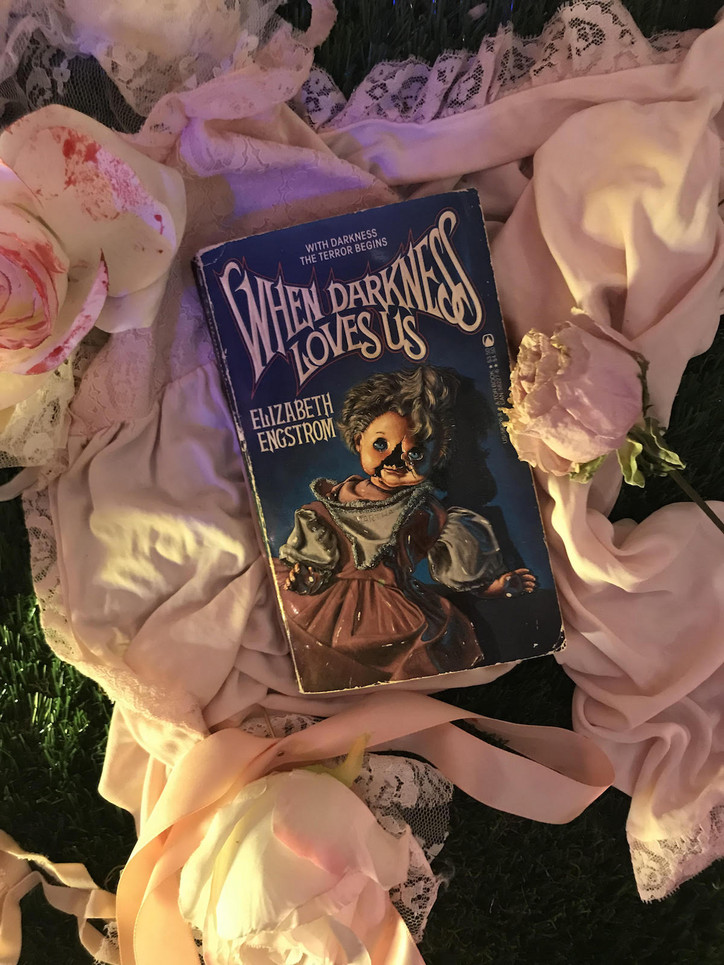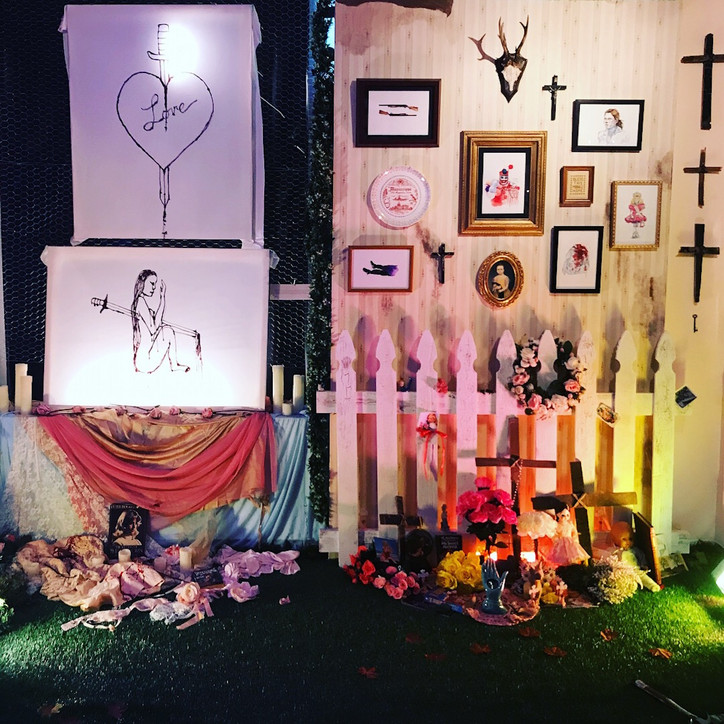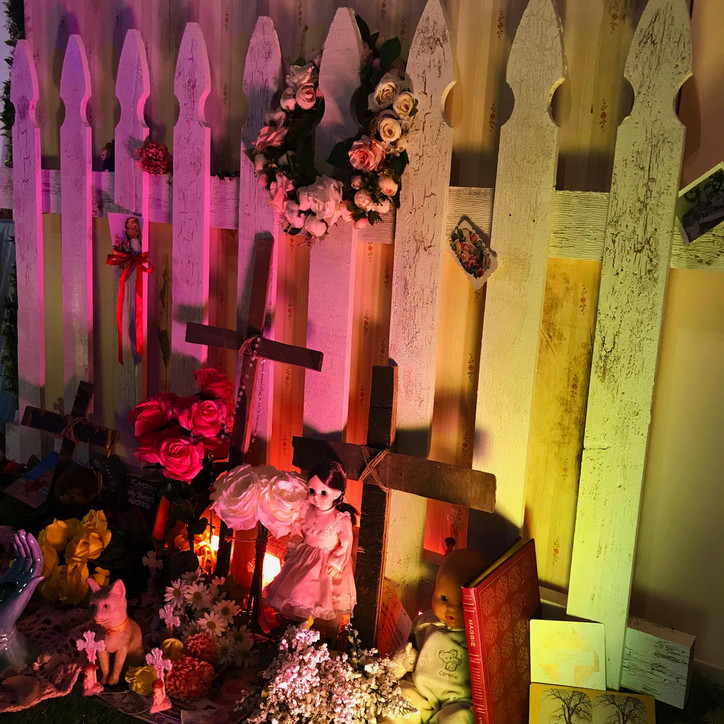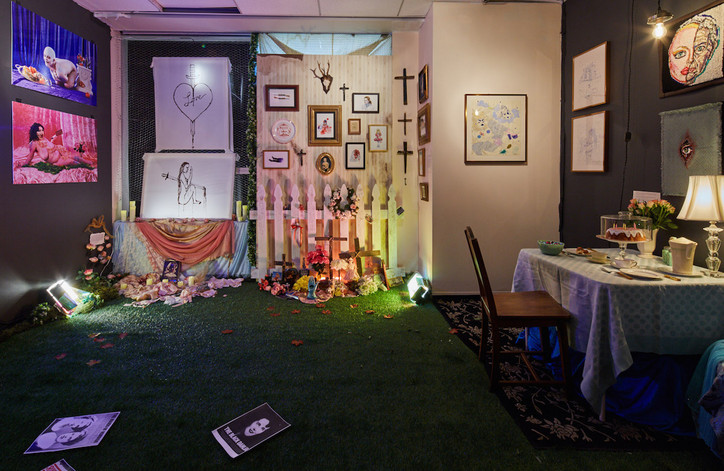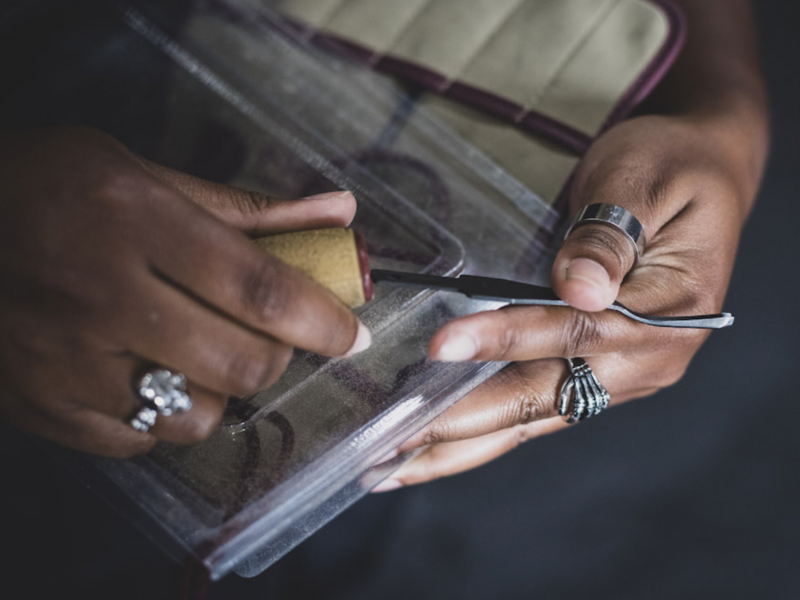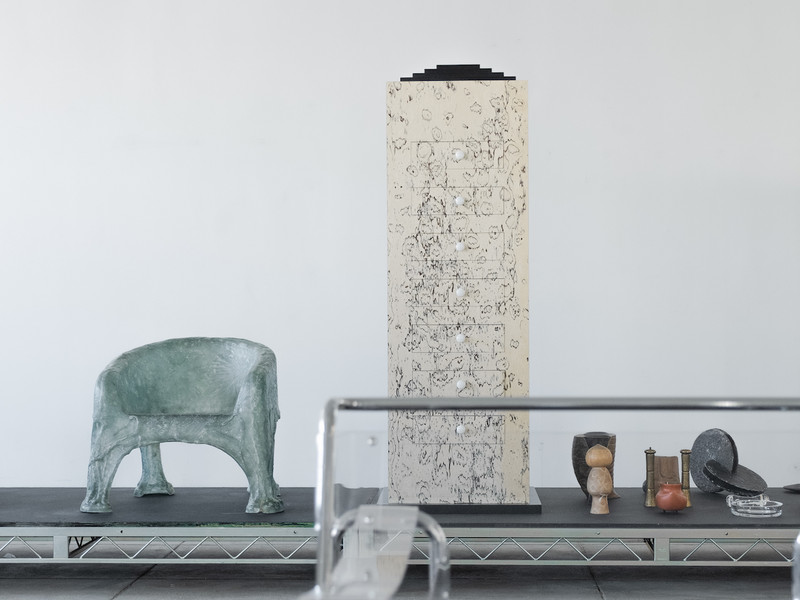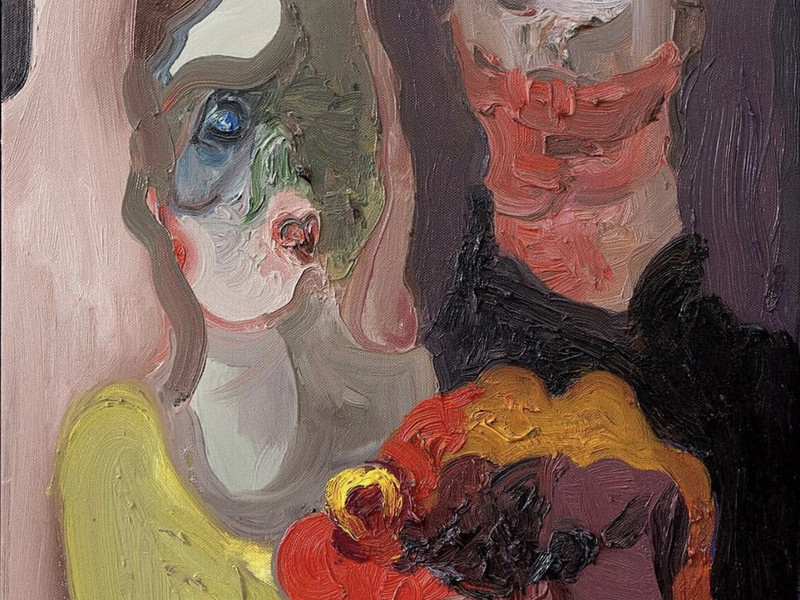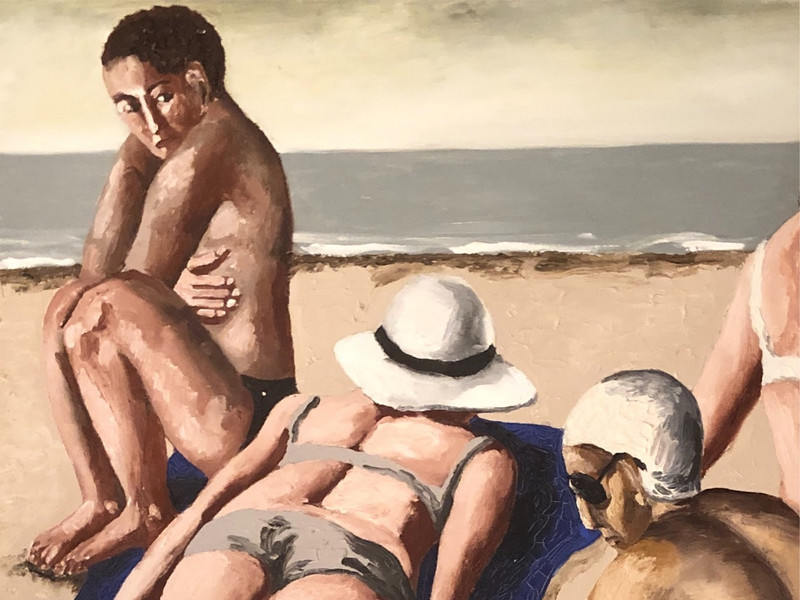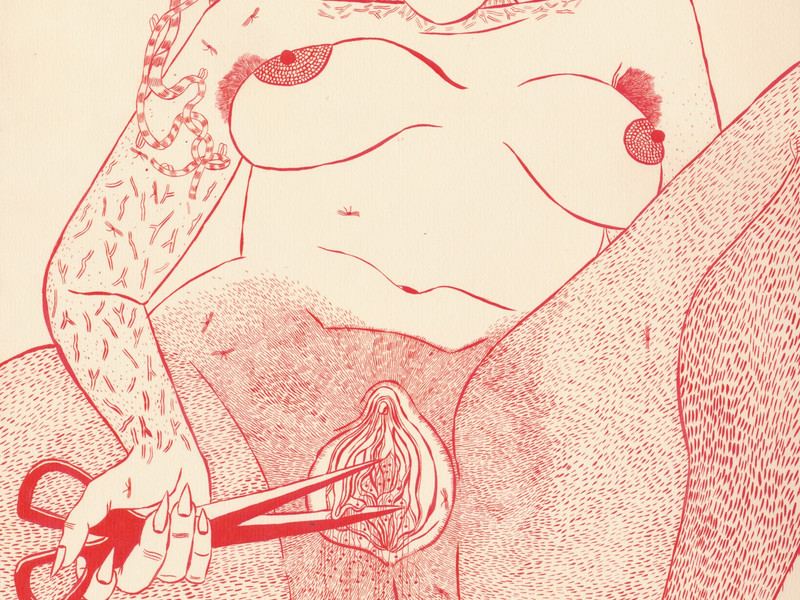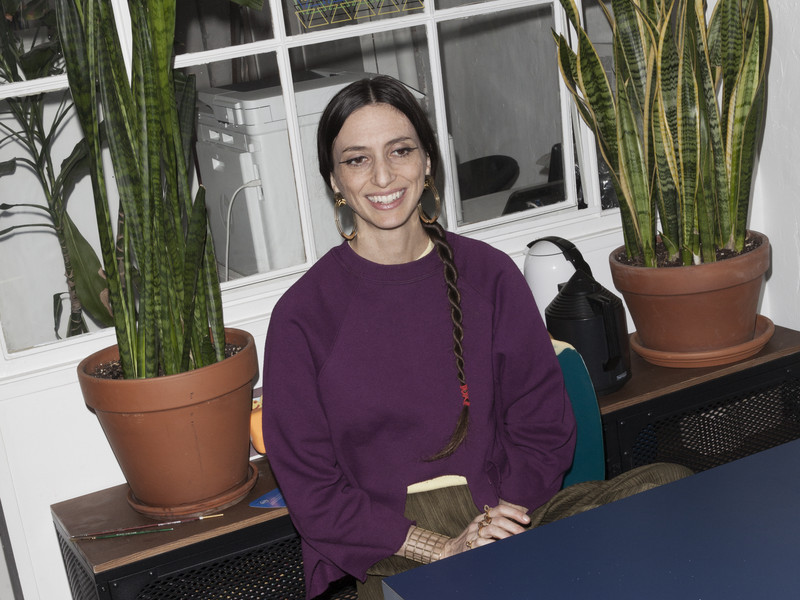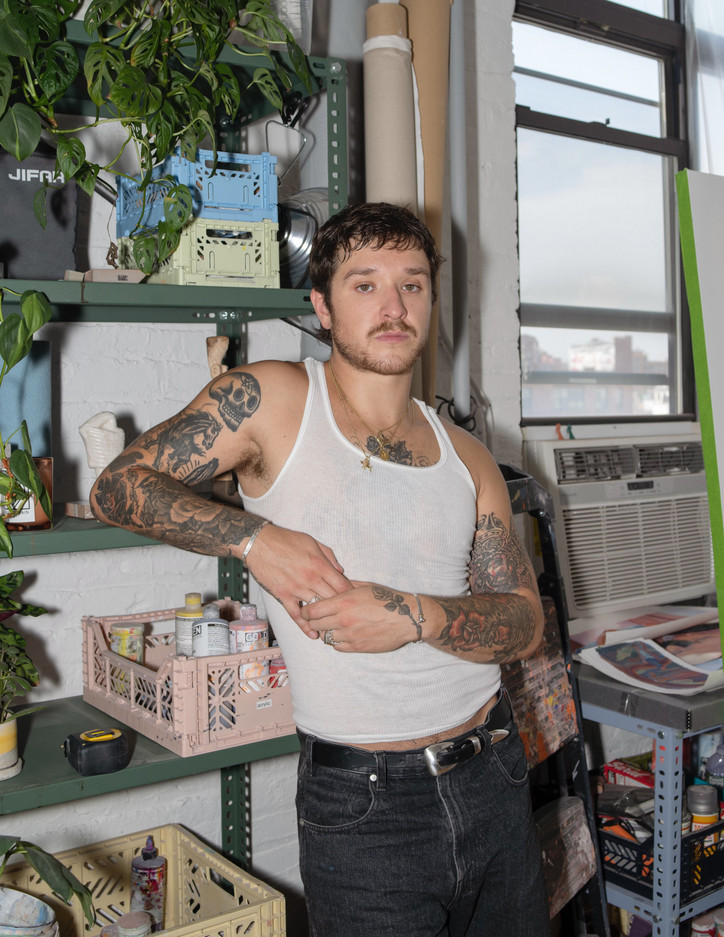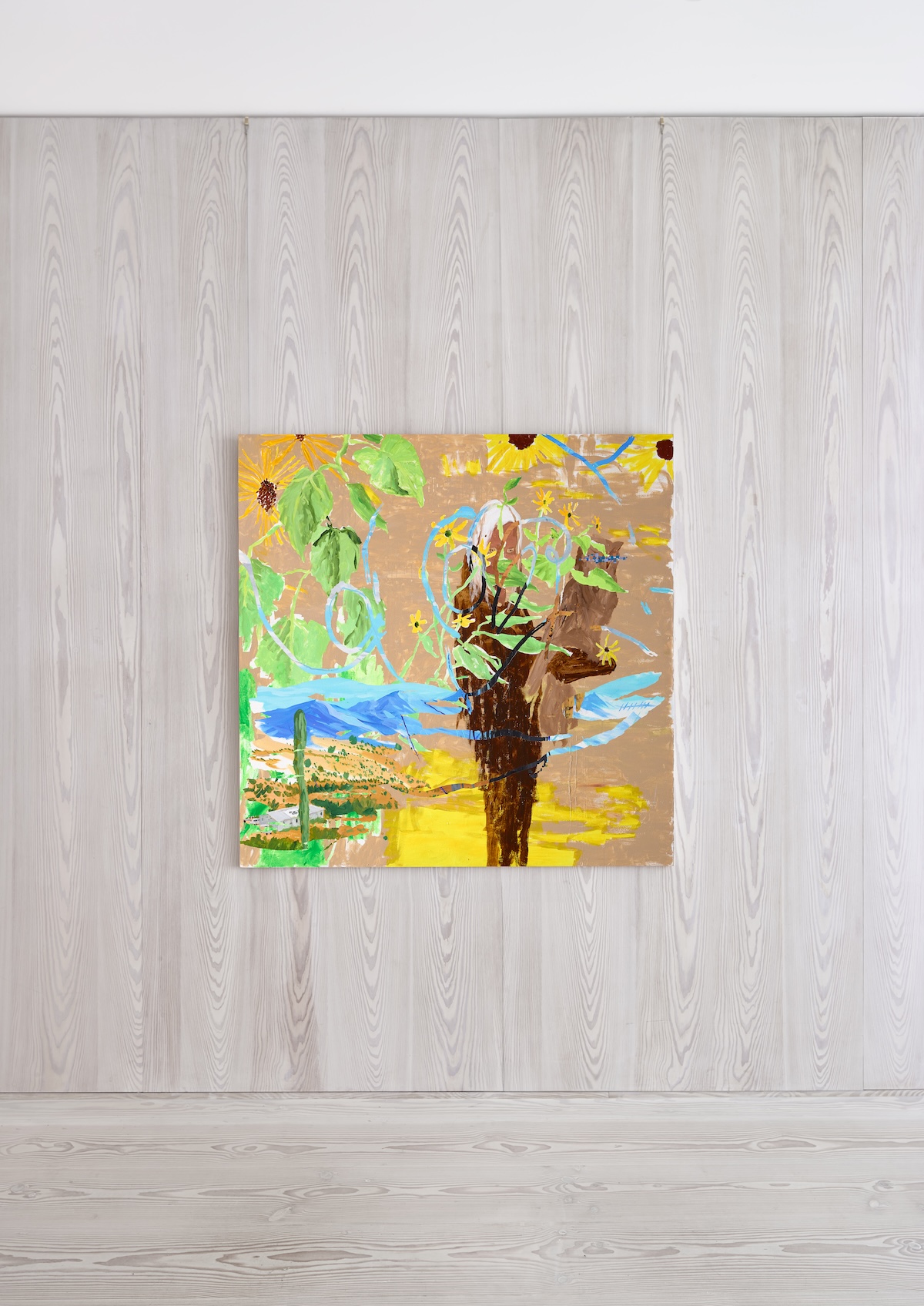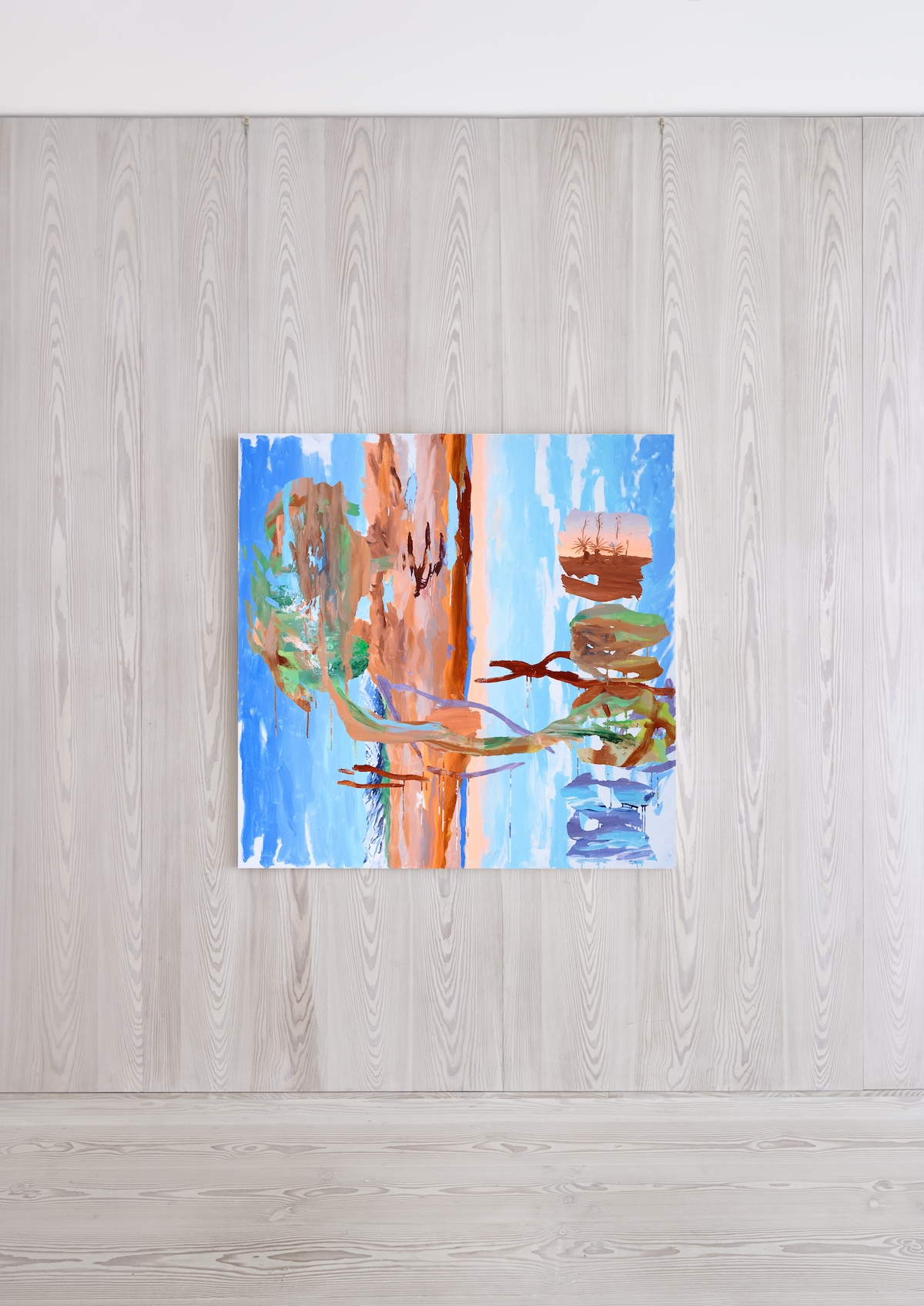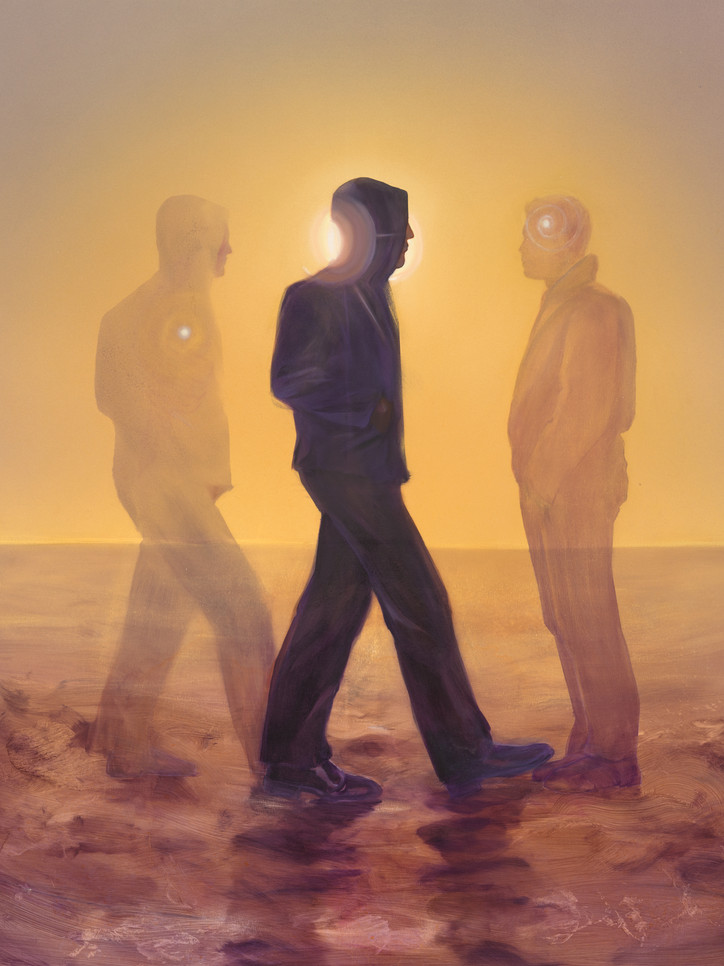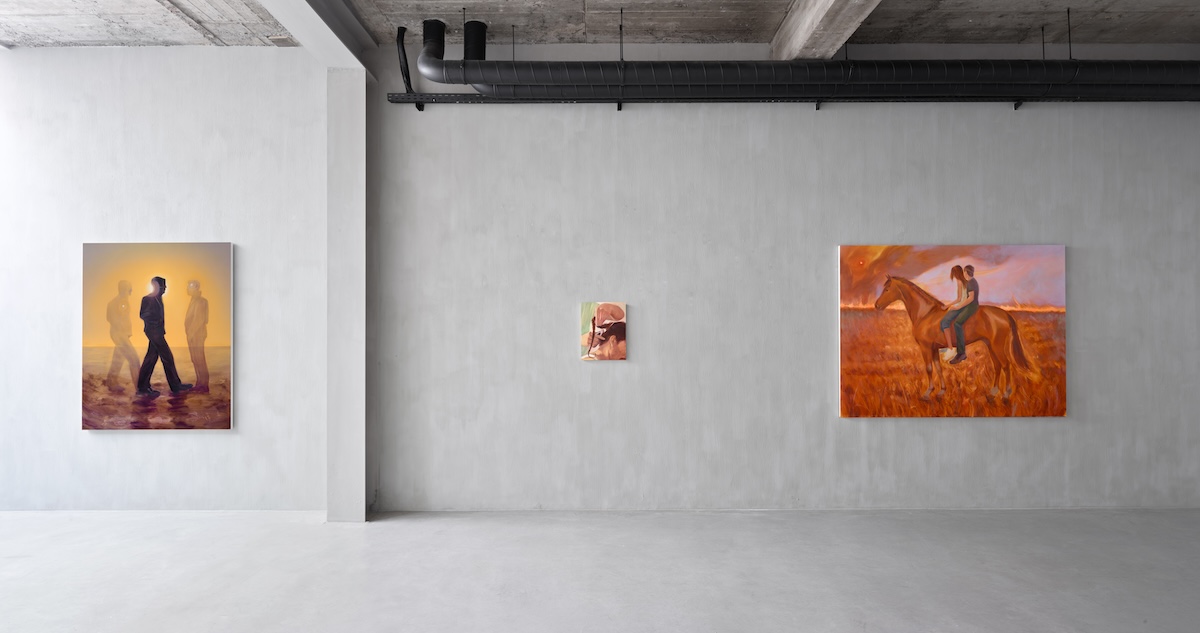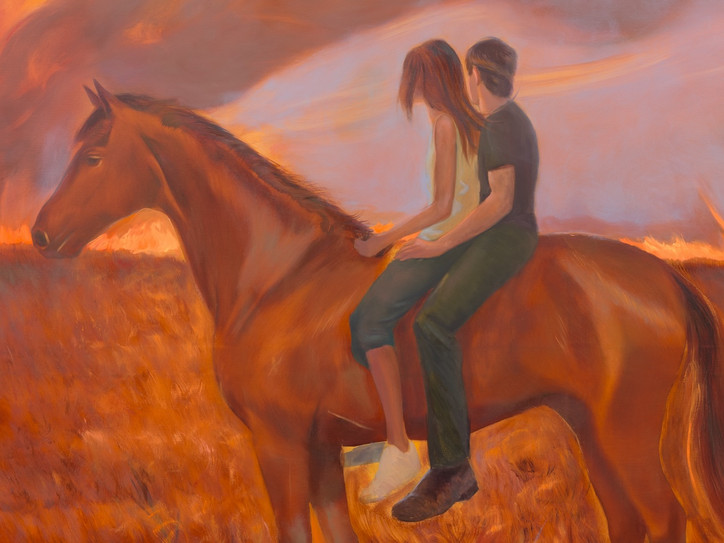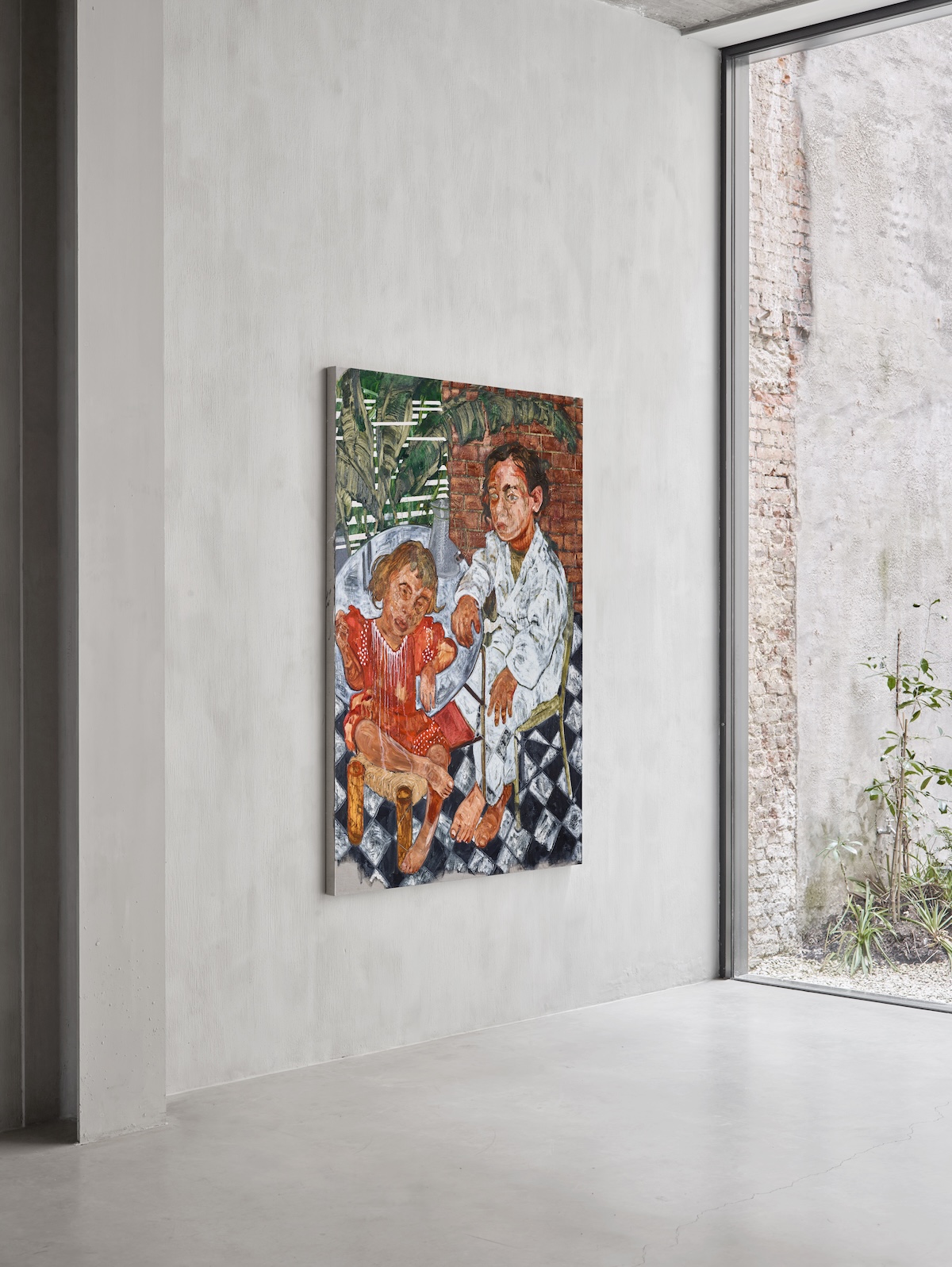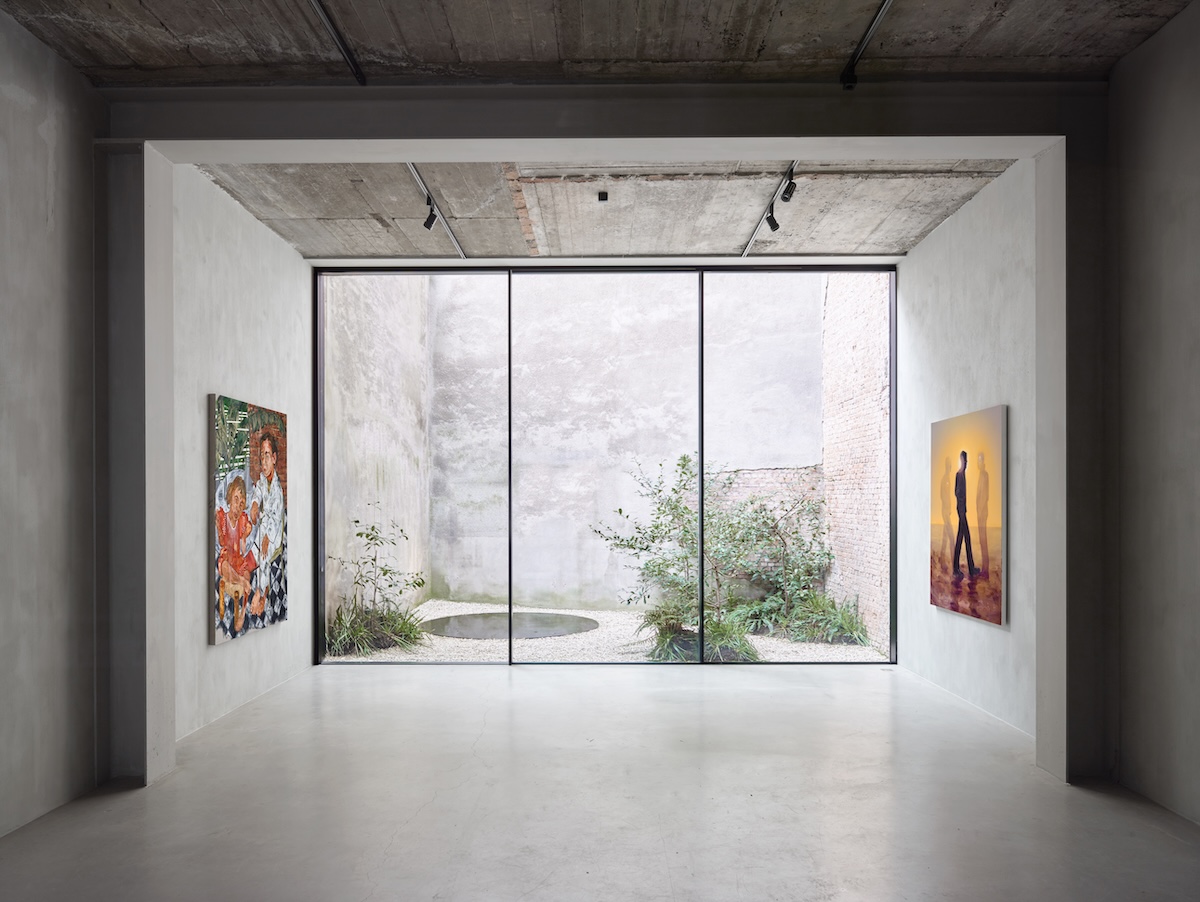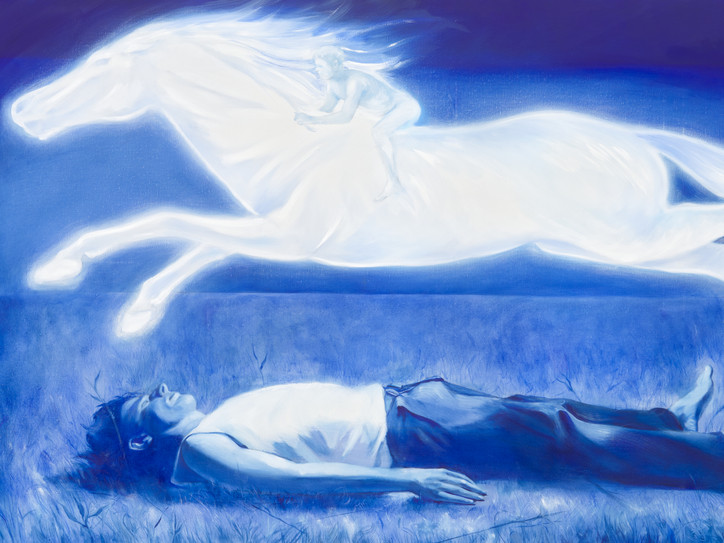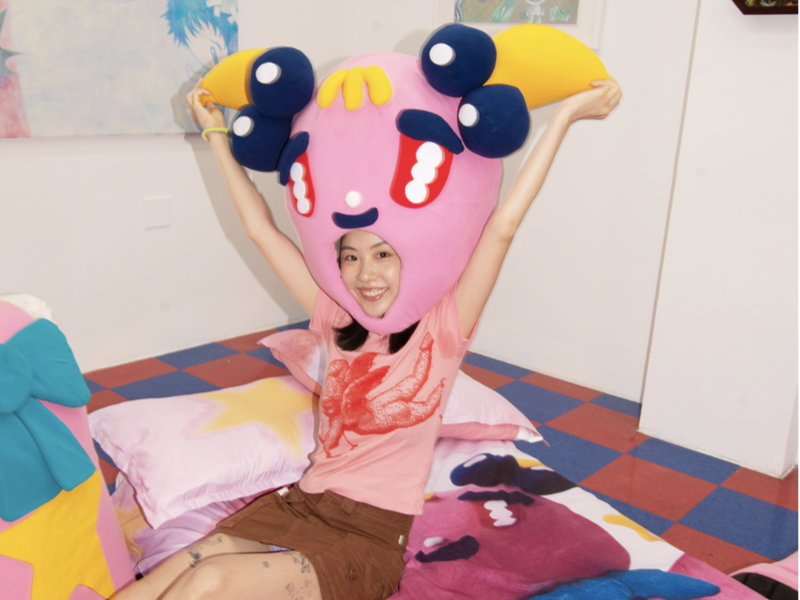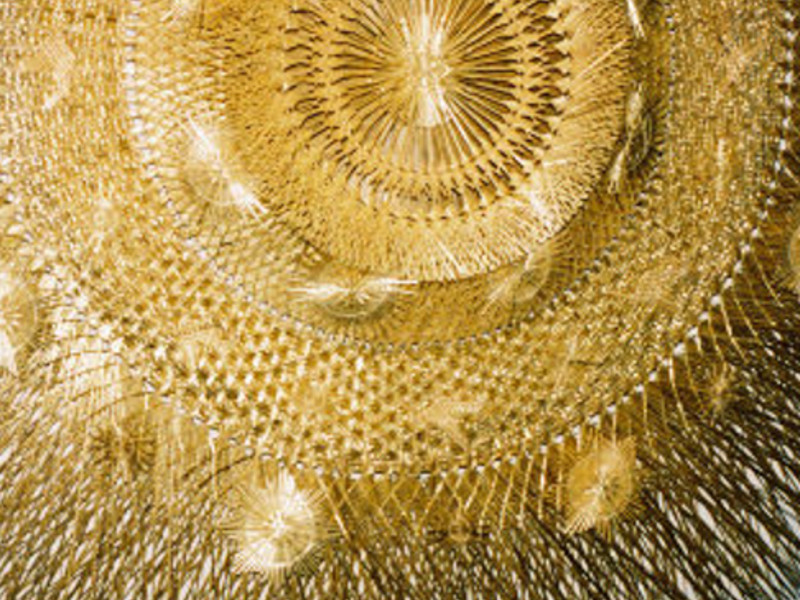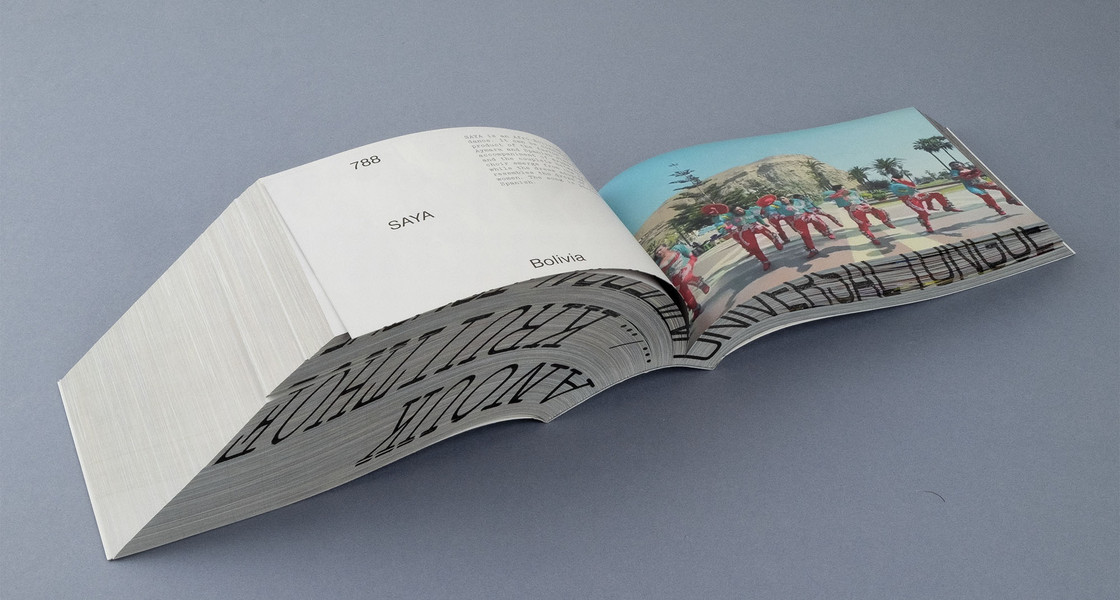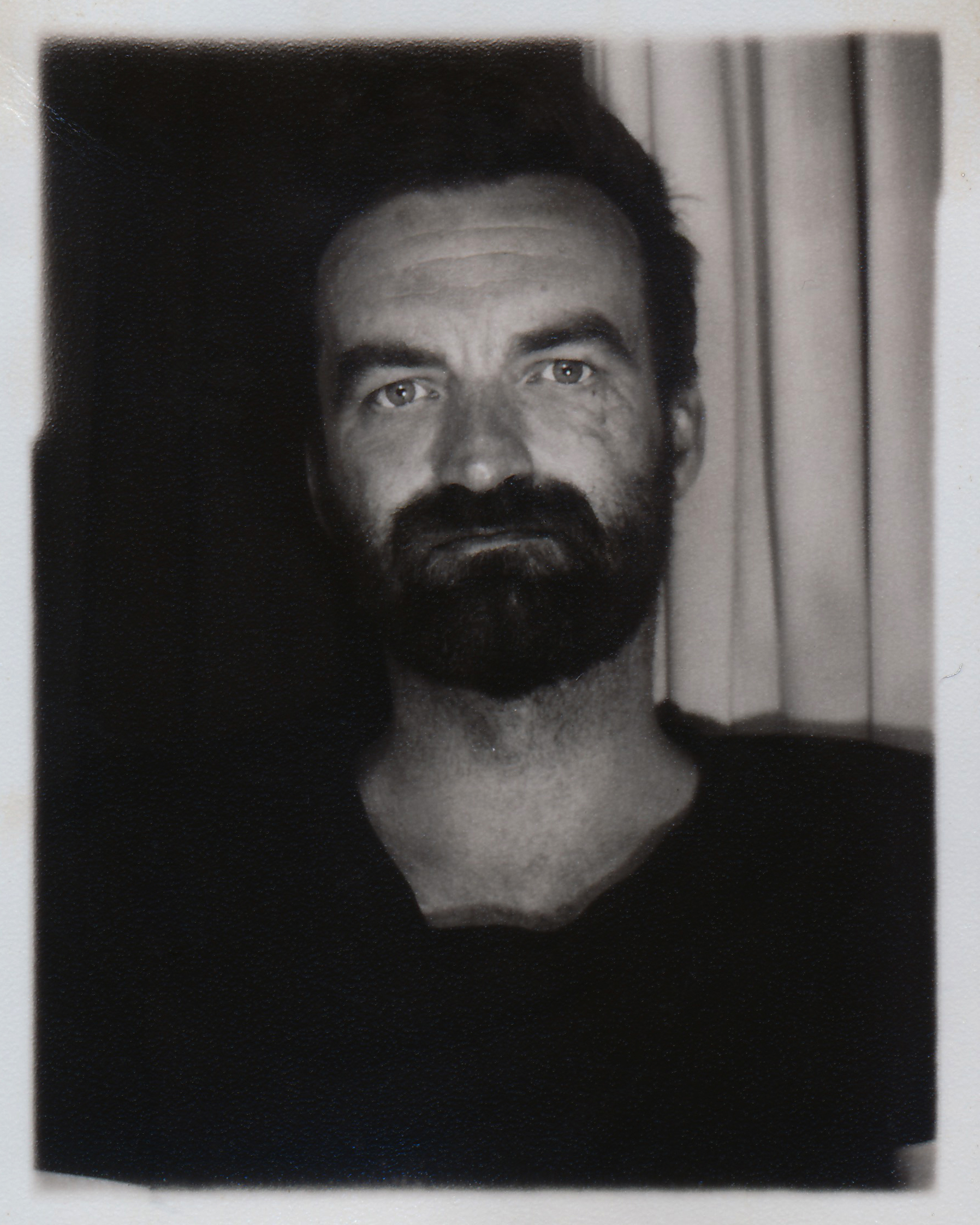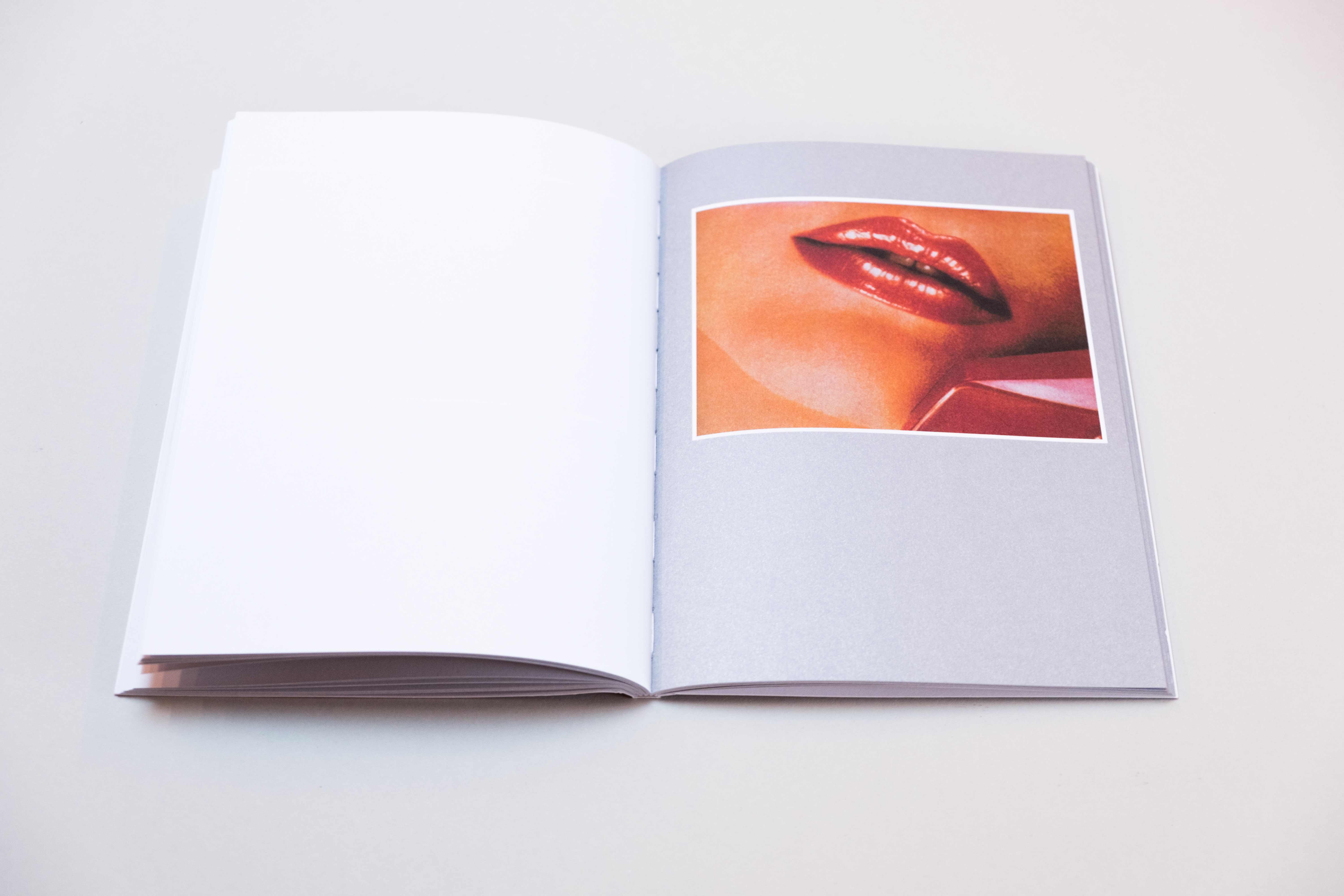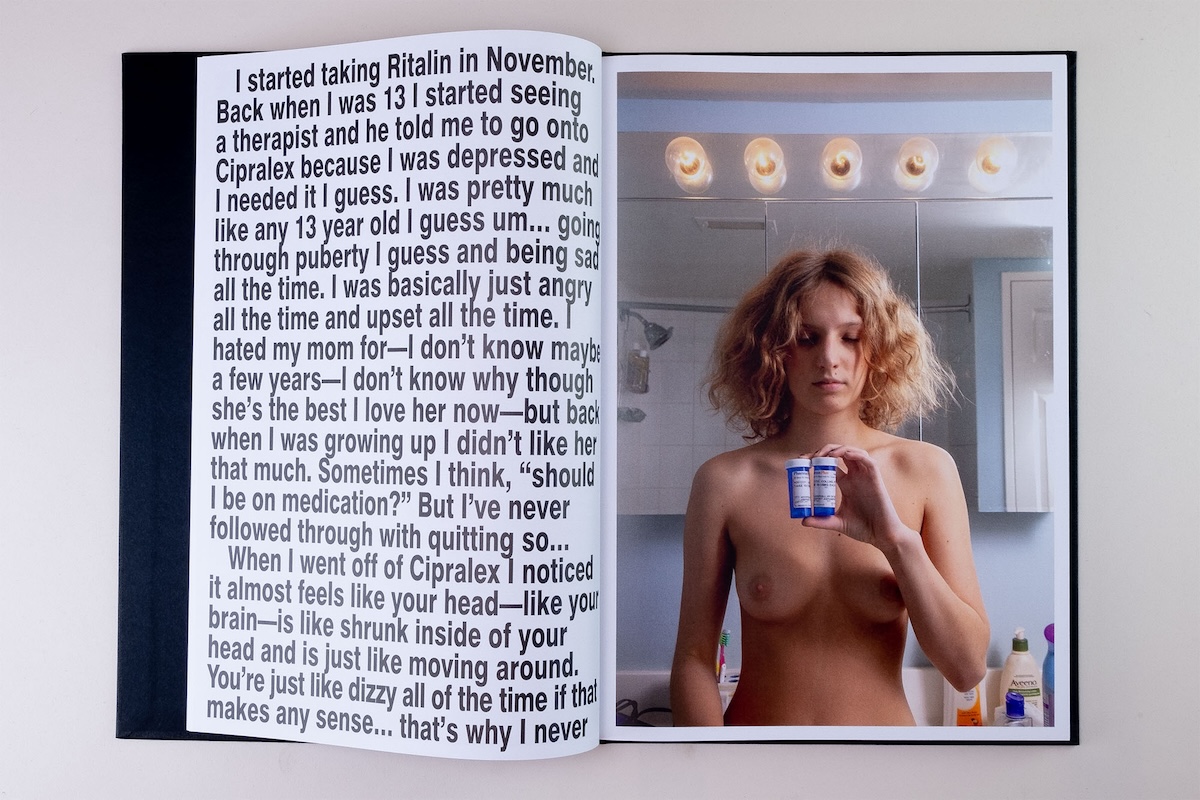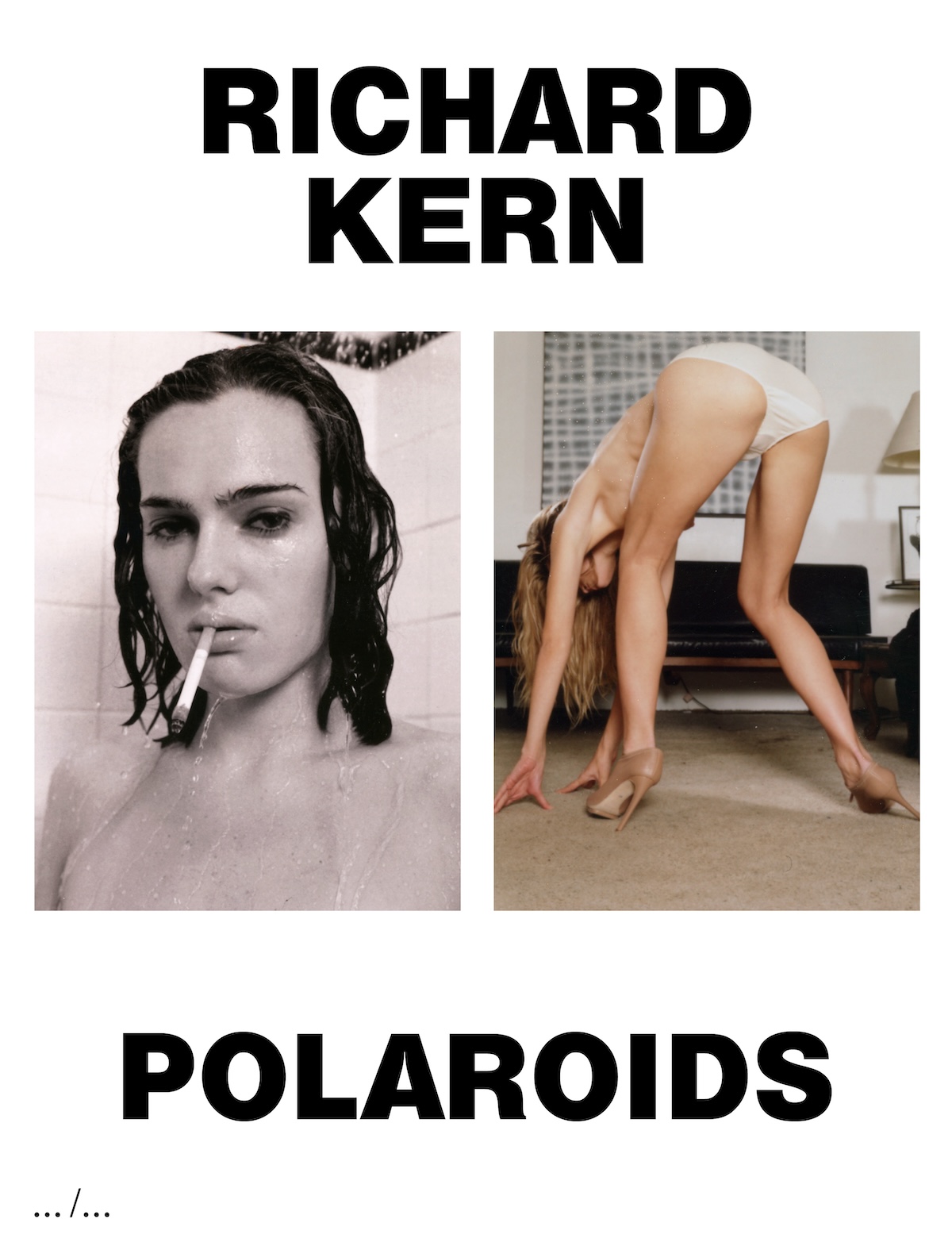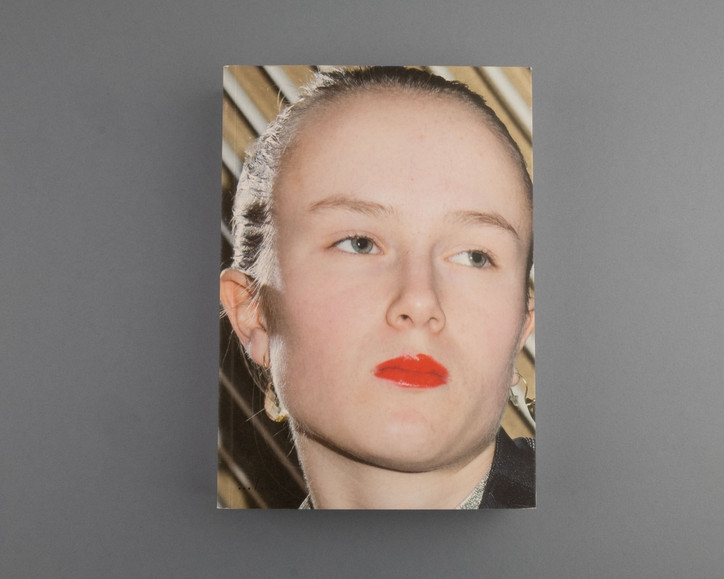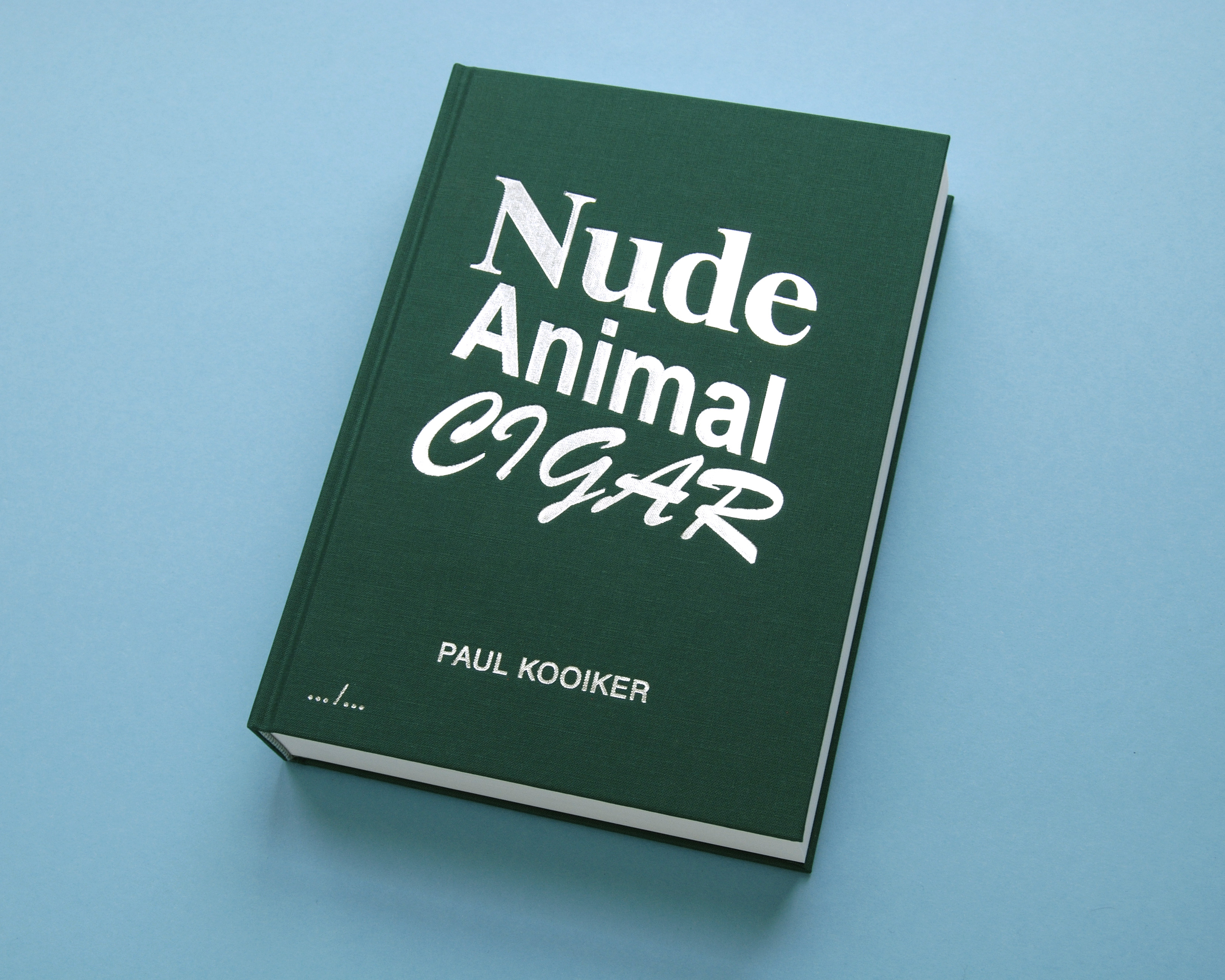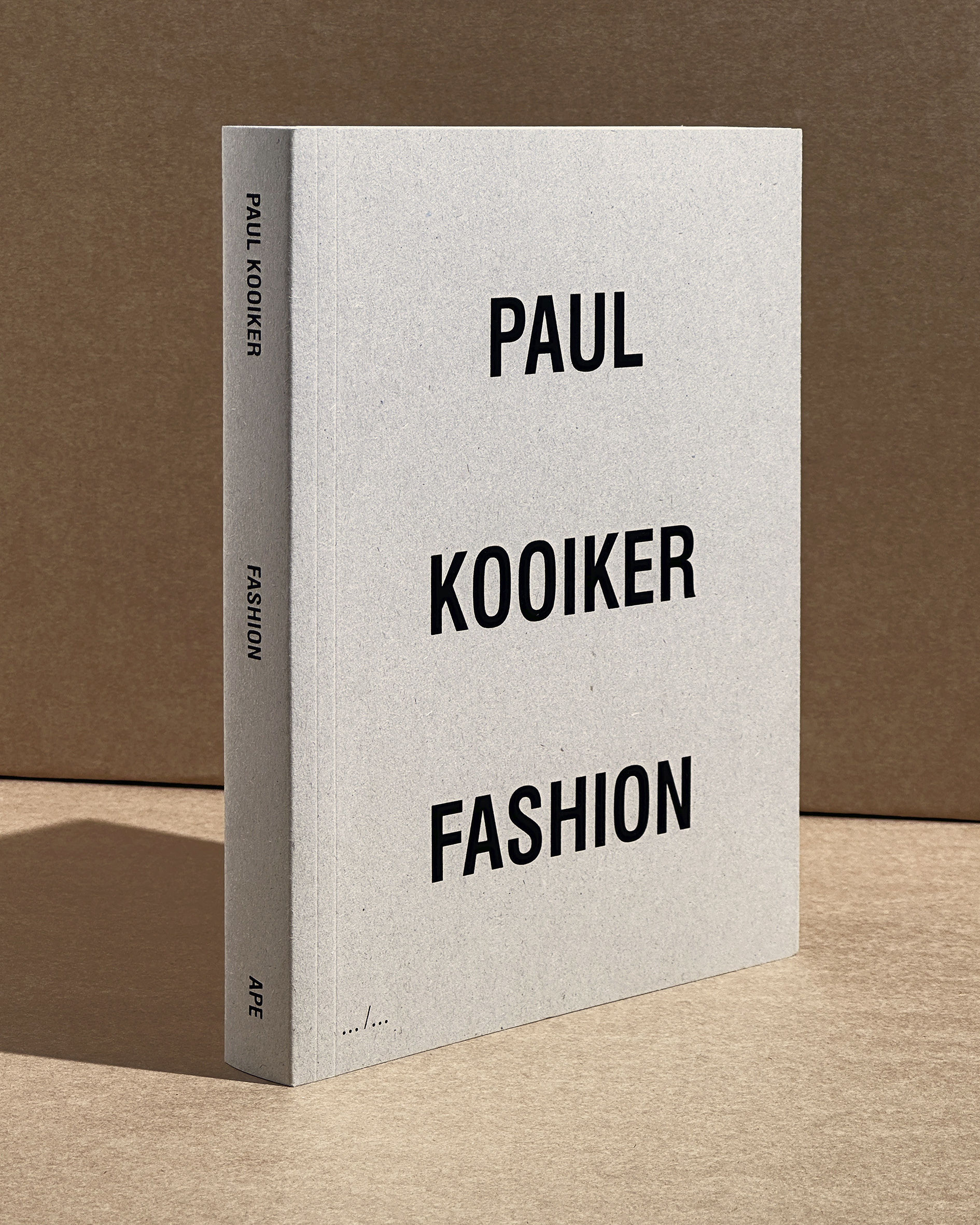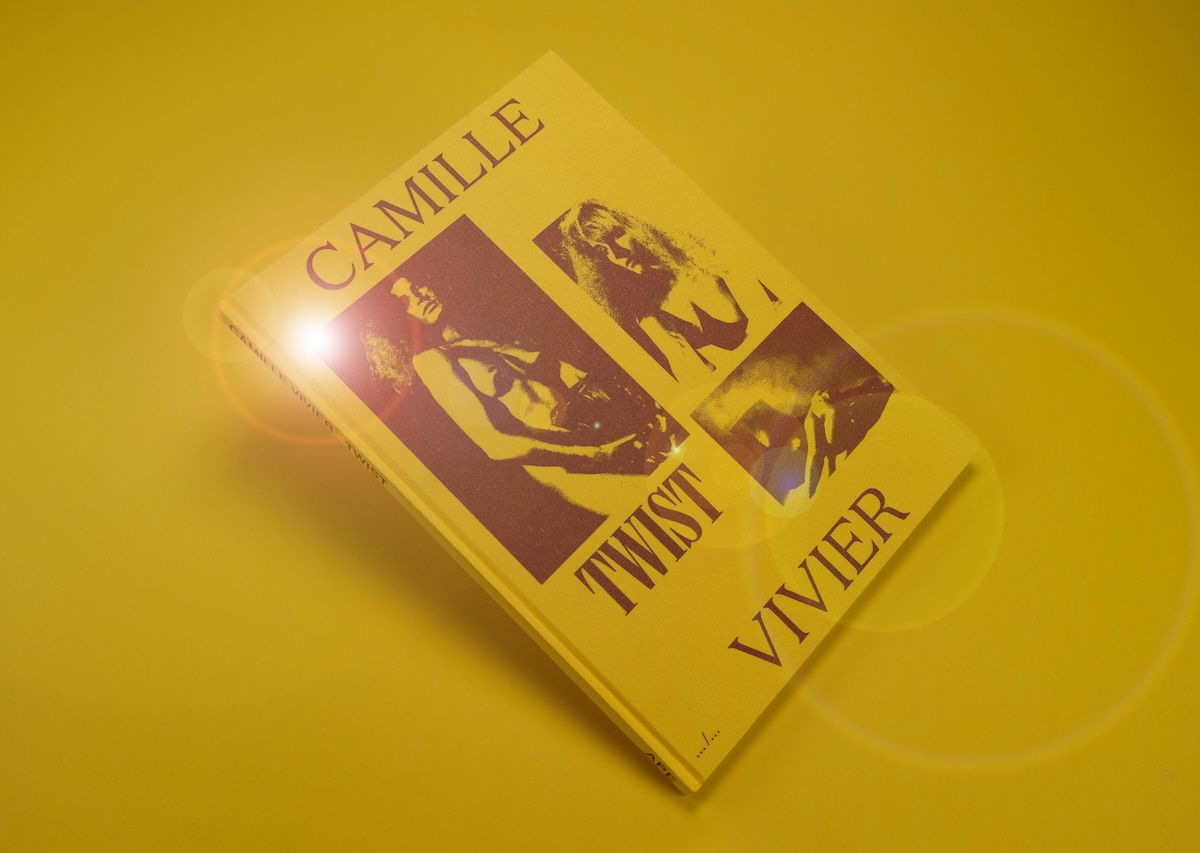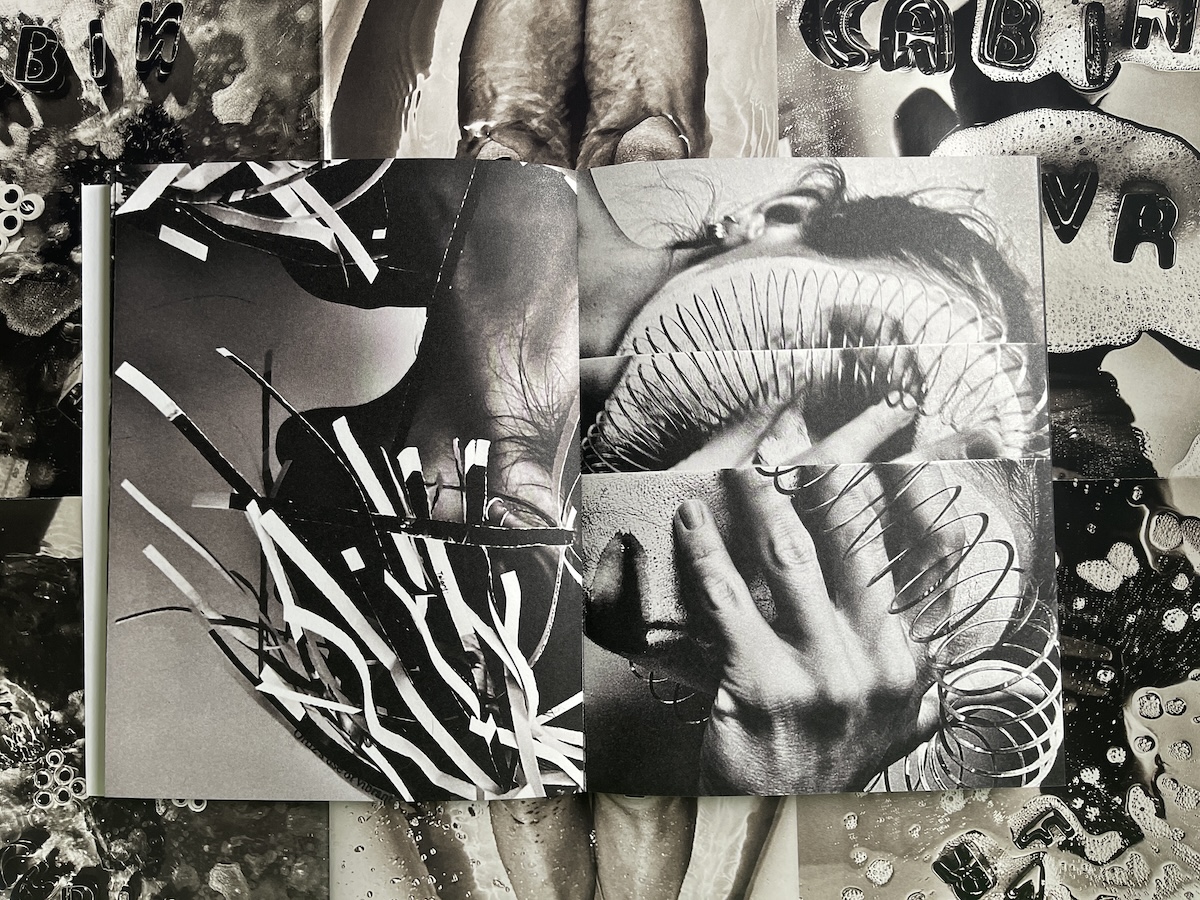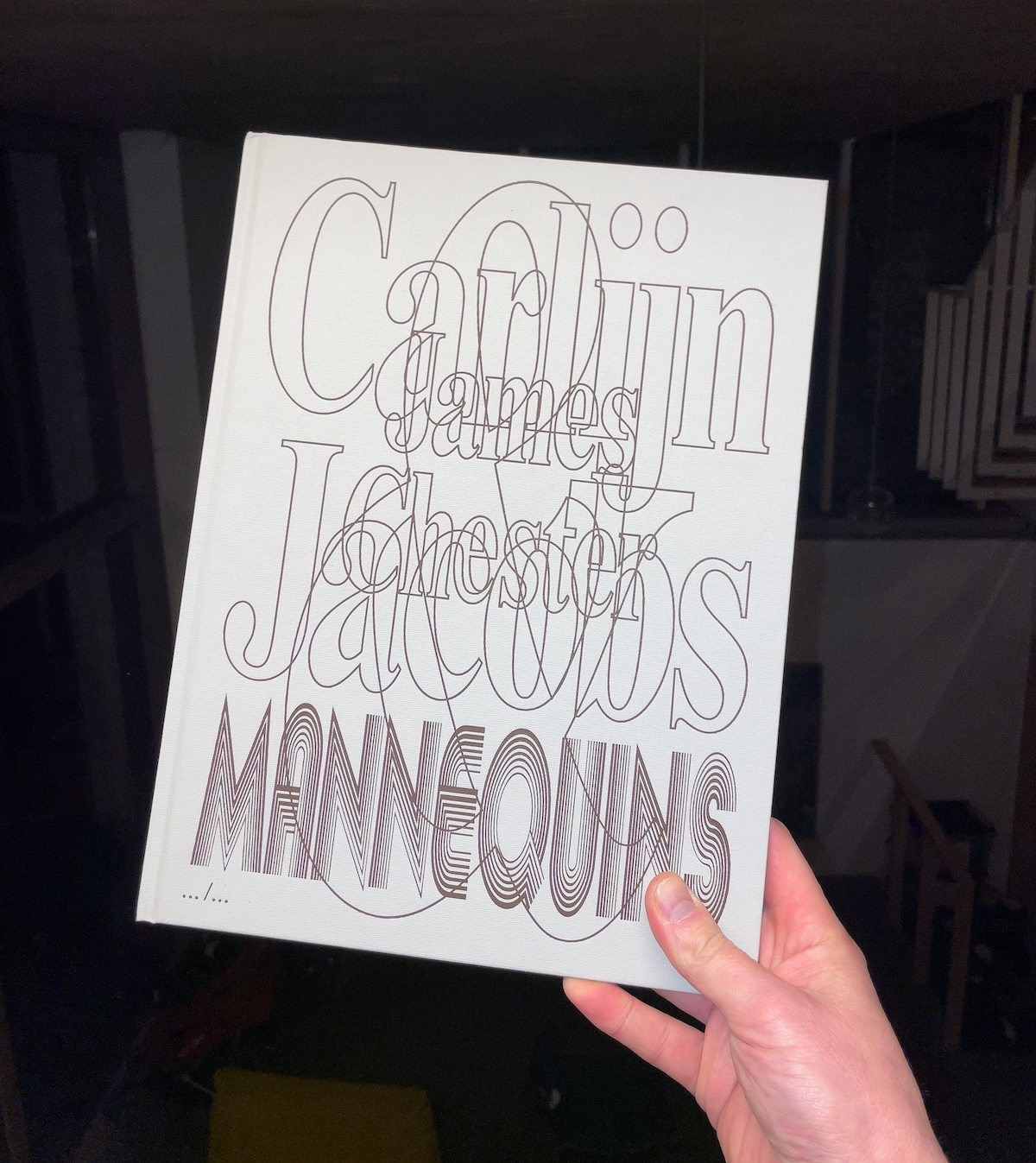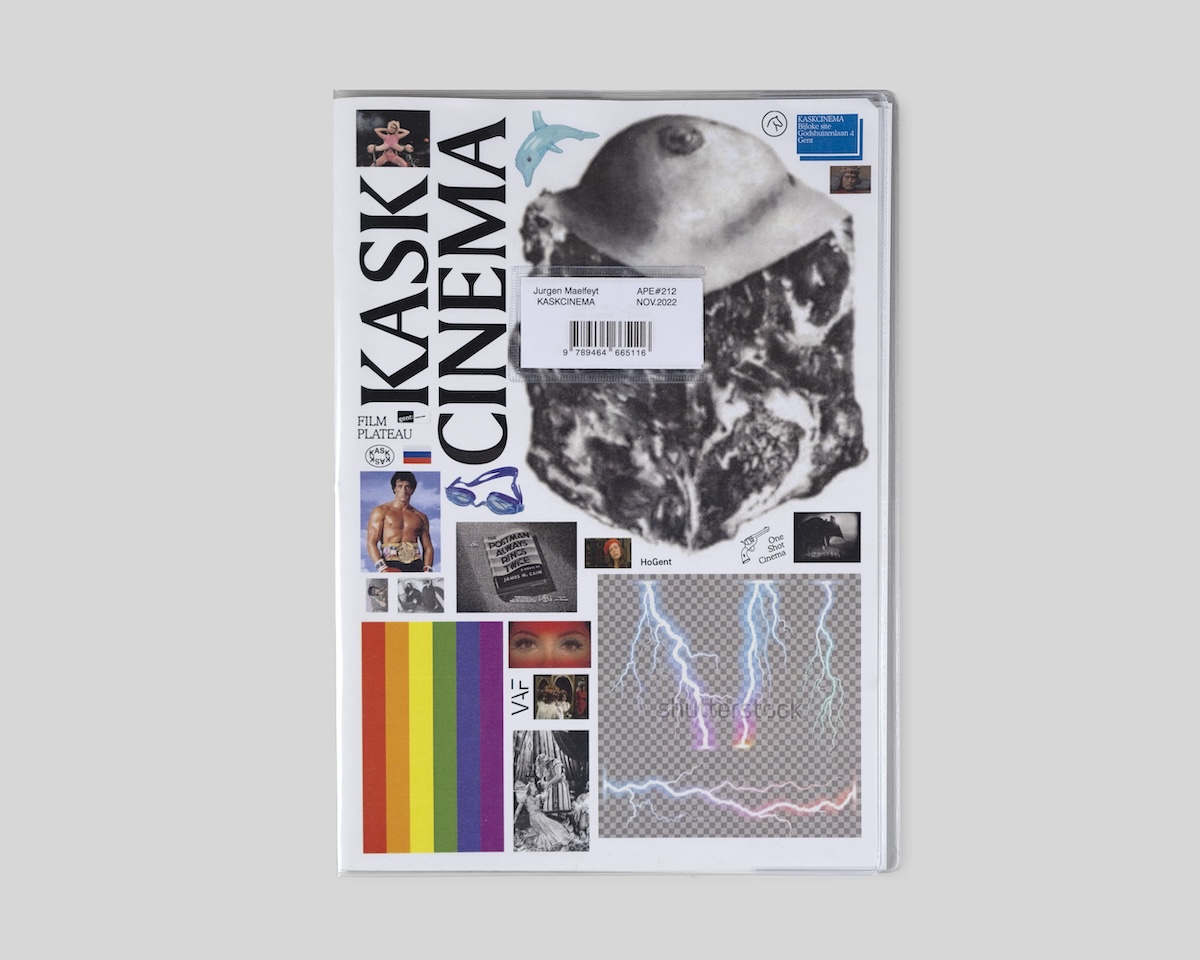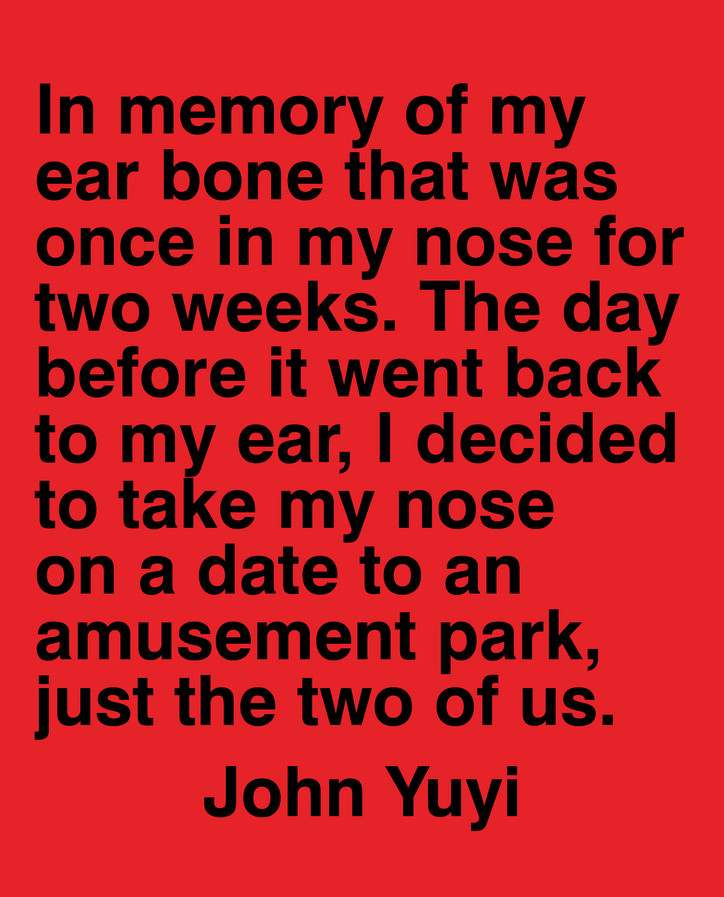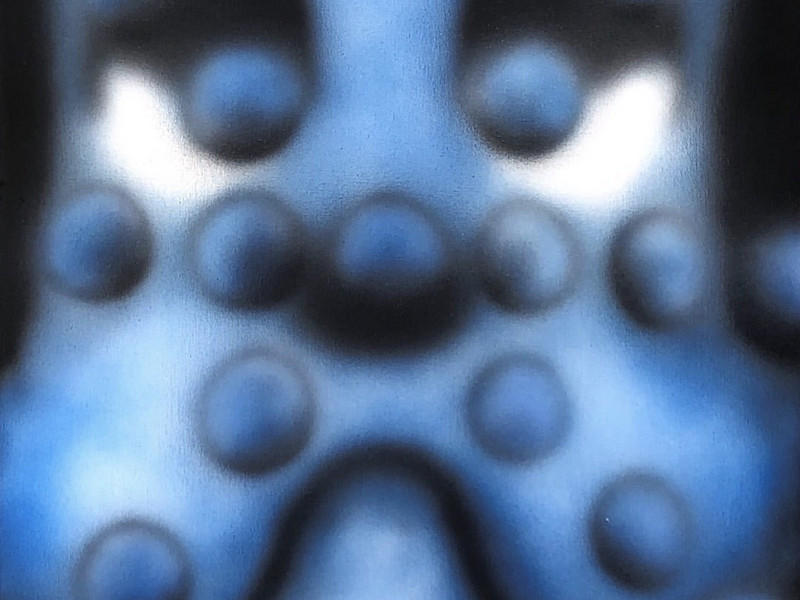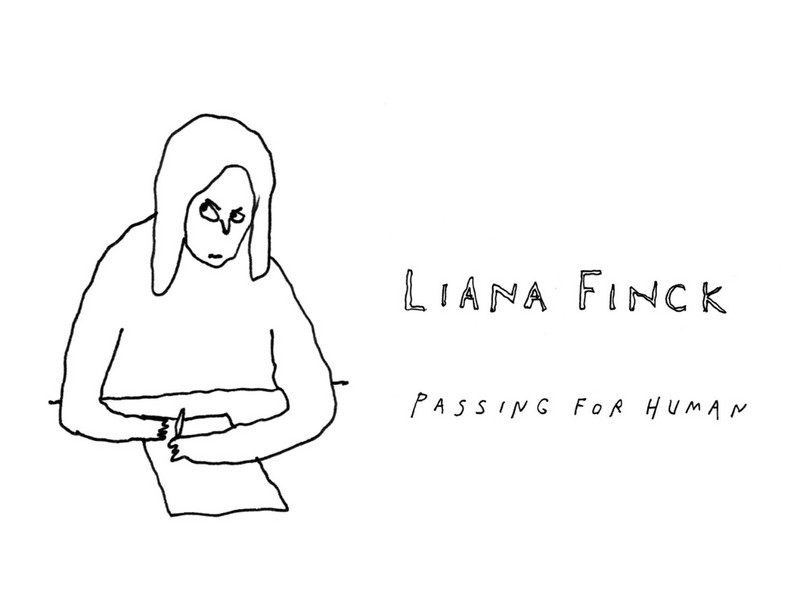You’ve essentially been navigating this dual existence your entire life.
And even still. I've actually grown bored talking about it and I don’t feel like I need to define myself anymore. I also think that definition was based on white people's comfort, whereas whenever I meet Mexicans, especially in Mexico, nobody fucking cares. My Tia has red hair and blue eyes, and she was born and raised in Mexico. It’s a very American expectation.
Have you interacted with anyone viewing the works at the gallery?
I had an interesting conversation with this woman from Spain, and I don't meet a lot of legitimately Hispanic people. It was a nice chat. She was like, Are you Spanish? And I said no, but her term for Spanish was all-encompassing, while here in the States you don’t say that. I think an uninformed person might say Spanish, but for the most part, it’s like, Oh I’m Chicano, or I’m Dominican. There are all these sub-sects.
Right, and I relate to that because I’m half Dominican and Bangladeshi, but I resonate more with my Dominican side.
Yeah, and as far as the response to the work, I think that because I look the way that I look, and I've experienced this for a lot of my life. A lot of people expect me to be the spokesperson for Mexican people. And I just can't speak to that experience at all because I'm white, and I'm abundantly aware of that. So when there’s an expectation for my work to be about a certain thing, it’s not always the case. There’s a painting in the show — probably one of my favorite paintings actually — of me cutting my friend Rogelio's hair. He’s also Chicano. I’ve known him for like 10 years, he’s recurred in probably five of my paintings. I think he’s a really good stand-in for me in a lot of ways. He had these really long braids and hadn’t cut his hair in 10 years. He moved to New York recently and the second he got off the plane came to my house and asked me to shave his head. I took a video because it’s crazy to be the person to shed this person of 10 years of their life. The still from the video captures exactly what you said before, the tension right before I cut the braid.
To me, that painting is a conversation about intimacy, bonding, and masculinity that has nothing to do with being Chicano. There's this expectation or this idea that the work has to be very literal about who I am, but it just so happens that these are all paintings about where I'm from and who I know which just so happens to be bridled with this amazing history. I could be Chicano and be from Iowa, and I wouldn't have the same relationship I have with Chicano activism, food, or culture because Denver and Aurora where I specifically grew up are so rich with Mexican-Americans.
Artists are sometimes automatically expected to engage with identity politics, but it doesn’t have to be that. When I look at your work I think of reading a novel and being given certain snippets or details about a moment and having to piece those together to bring the image to life in your mind. I’d also like to point out how these specific scenes wouldn’t be found in a cityscape.
Yeah. It’s funny too. When I first moved to New York, my work was already very rooted in the southwestern landscape. People asked if I was going to start painting New York scenes. I guess as a painter I felt I had this duty as an observer and recorder to do that, but I realized pretty quickly that wasn’t my job. I'm not from here. I have no need to tell any of these stories because it's not who I am. Being from the Southwest, there's this affinity for a big city where you want to know what that's like, yet moving here made me much more aware and grateful for the abundance of the desert and the plains of the Southwest. It brought me closer to home in a way, and that's been a great gift of authenticity in terms of knowing who I am and who I'm not. I think if I moved here when I was a lot younger, I would've struggled with that because it's such an influential city. But as an adult, and I'm not saying this to be self-aggrandizing, there's a certain degree of awareness of things I just don't fucking care about. That just comes with time, truly, and I think that this city has granted me that experience.
Yeah, and there’s so much here. It can be overwhelming even as a native.
Totally, there are times when I meet people, and it's hard not to be influenced. You're just like, Damn, these people are cool, they’re into cool shit. Yada, yada, yada. Also, not to go off on a slight tangent. There’s been this revival in Cowboy Americana, especially with the Beyonce album and all these other moments in pop culture, which has been wild to see as someone who’s from that place and grew up going to stock shows where people are into that yee-haw shit. I was just in Texas for a wedding, for my childhood best friend, and I got to wear my cowboy hat again and I was like, Damn, this feels good. In New York, it would feel too out of place although I probably wear cowboy boots six out of seven days of the week.
It really has become a kind of spectacle in pop culture, even though something like cowboy boots has been popular for a long time. I do think it’s great that people are revisiting Cowboy Americana and revealing its Black, Chicano, and Indigenous roots. Renaissance Act II brings up a lot of specific references to Texan history that aren’t in the textbooks. It’s quite literally a renaissance of a culture that has been dominated by a white figurehead for so long.
To that point, my family were rancheros, vaqueros. My great-great-grandmother was a curandera and her husband, my great-great-grandfather, was a horse thief. He stole horses with Pancho Villa. All my family is from Colorado, Texas, all these different places in the south and southwest. My entire childhood, it’s just been like yes, cowboys are Mexicans, so witnessing this western renaissance has been kind of interesting. In Colorado, they have these horse competitions and dances, all the most extravagant ones were always Mexican. I’ve painted horses for seven years now pretty consistently because it’s just always been part of my experience. I would visit my biological father every other weekend and his house backed a ranch. One of my sisters used to ride horses for that ranch. I would wake up and there'd be horses in the backyard. Horses have been a vehicle for so many things for me, and they're mythic in this really kind of unreal way. As many horses as I've been on, every time I’m aware that this thing could fucking kill me. And that's crazy, but it’s amazing.
